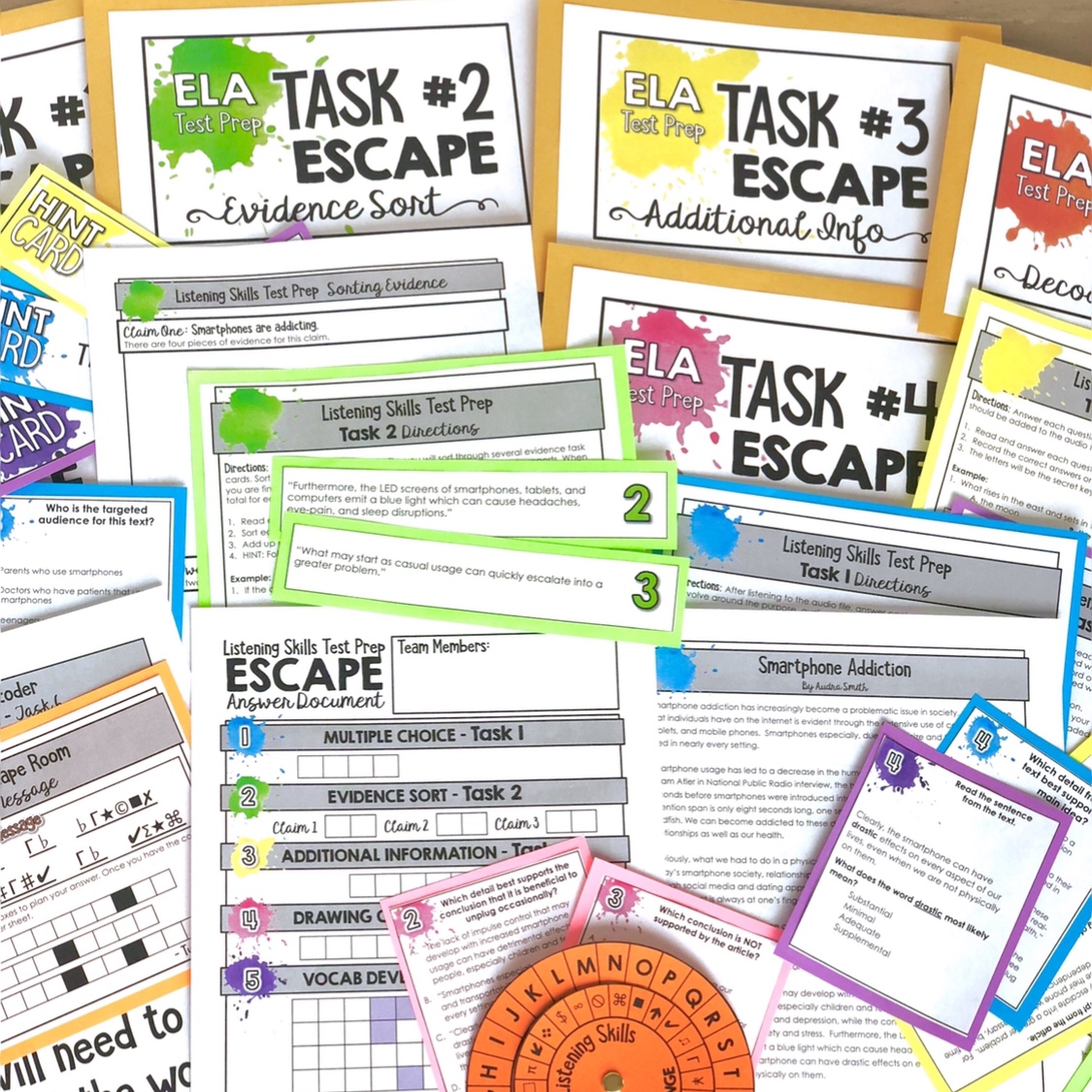If you teach at a school that administers the PARCC, SBAC, or CAASPP, these standardized tests will assess your students’ listening skills. And typically, this is the strand in which most students perform the lowest. However, knowing how your students perform on the listening portions of these tests is helpful because it enables you to help your students boost these skills and improve the overall performance on the test.
I, too, teach at a school that administers one of these tests, and the listening portion is where my kids earn the lowest marks. To try to combat this, I’ve started making a more focused effort to plan meaningful listening activities in my curriculum.
While I don’t recommend always teaching to the test, it is necessary to note that the scores from these tests are important for our schools. And because of this, we should do what we can to help our students score their best. In my classroom, I add supplementary activities that are related to the units I teach that focus on listening.
Here are five things you can do in your classroom to help boost your students’ listening skills:
1. Incorporate listening into literature
To help engage your students in a new novel, play the audiobook for the first few pages as your students listen and take notes. As they listen, they should not have the text in front of them. Instead, have them doodle and write out whatever catches their ear. Then, have a quick discussion about the beginning of the novel and have students piece together the exposition. After a brief class discussion, go back and read the first few pages together and point out all of the essential details that students caught as they initially listened to the audio file.
2. Supplement units with cross-genre listening
Another way to incorporate listening skills into your lessons while you read a novel is to have your students listen to nonfiction news articles that are related to the context of the novel. Doing so will allow your students to learn more about the historical or social aspect of the book and look at it in a new way. I love using the website Listenwise for this. I use the free version, and I play the file through my computer speakers.
3. Complete a listening escape room challenge
This listening skills escape room challenge includes a professionally-recorded audio file about teenagers and smartphone use. Play the audio file for your whole class two to three times before beginning the escape room. As students work in groups through the challenges, they will answer questions about the audio file that mirror state tests. It’s a fun and engaging way to focus on test prep without students knowing that you are actually doing test prep.
 |
| ELA Listening Skills Test Prep Escape Room |
4. Listening mind maps
Another way that I help my students improve their listening skills is by assigning them listening-focused assignments. One assignment is a mind map. As students listen to an audio file, whether it be an NPR article, a TED Talk (without the video component), a short story, or even an entire chapter of a novel, I have them create a mind map. A mind map is a visual way of doodling and writing and taking notes. Students capture what they hear and their initial thoughts of it. Earlier in the school year, I had my students do this for two different stories. My juniors did this with The Devil and Tom Walker, and my sophomores did this with The Veldt. In both cases, my students were able to capture the symbolism and important details just by listening to the story twice. And while you do not need to assign a mind map or listening-based assignment every single time, you should emphasize the importance of taking notes.
5. Listen multiple times
I cannot emphasize enough the importance of listening more than just one time. After I play a file once, I ask my students some questions to see what information they retained. I even ask them some questions. After that, I play the file again. I make it a point to emphasize how beneficial it is for them to listen more than one time. With each additional listen, students retained more information.
With these five listening strategies and ideas, your students will be well on their way to improving their listening scores on state tests. And, if you incorporate these strategies seamlessly to match your current units, it won’t even feel like test prep.





